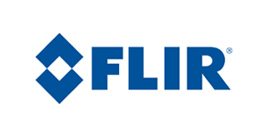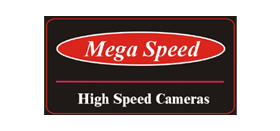Listen to this Article
In the ever-advancing field of industrial automation and robotics, achieving the highest levels of
precision and reliability is paramount. Machine vision systems, which enable machines to "see,"
are crucial in this efficiency and accuracy. Central to these systems are machine vision lenses,
which must endure the harsh conditions often found in industrial environments. This is where
ruggedized machine vision lenses come in. They offer durability and precision without
compromising performance.
What Are Ruggedized Machine Vision Lenses?
Ruggedized machine vision lenses are optics specifically manufactured to resist shock,
vibration, temperature changes, and exposure harsh environments.
1. Durability and Reliability
Shock and Vibration Resistance: Built to endure the constant movement and
impact common in manufacturing settings.
Temperature Stability: These lenses can function effectively in various
temperatures, ensuring consistent image quality.
2. Optical Performance
Precision Engineering: Despite the ruggedization, these lenses maintain high
optical standards, ensuring sharp and accurate imaging.
Longevity: Investment in ruggedized lenses can translate to longer operational
life, reducing the need for frequent replacements and downtime.
3. Adaptability and Versatility:
Wide Range of Applications: From automotive manufacturing to pharmaceuticals,
ruggedized lenses are adaptable to many industrial applications.
4. Compatibility: These lenses can be integrated with various machine vision
systems, making them versatile tools across different platforms.
Choosing the Right Ruggedized Machine Vision Lens
When selecting a ruggedized machine vision lens, in addition durability requirements, it is vital
to consider the following factors:
1. Application Requirements: Whether you need macro, wide-angle, or telephoto
capabilities.
2. Sensor Compatibility: Ensure the lens is compatible with the sensor size and type used
in your machine vision system.
3. Field of View (FOV): To achieve optimal results, assess your application's desired FOV
and depth of field.
4. Cost vs. Performance: Balance your budget with your system's performance needs;
investing in high-quality ruggedized lenses can reduce long-term costs associated with
maintenance and replacements.
Applications of Ruggedized Machine Vision Lenses
Ruggedized machine vision lenses are employed in various applications across multiple
industries, including:
1. Manufacturing: For quality inspection and measurement gauging of products on
assembly lines.
2. Autonomous Vehicles: Used in self-driving cars, agricultural equipment, and unmanned
aerial vehicles (UAVs) for navigation and obstacle detection.
3. Semiconductor Inspection: To ensure the quality and precision of semiconductor
components.
4. Label Inspection: To verify the accuracy and quality of printed labels.
5. Robotics: In machine vision sensing for robotics to enhance automation and precision in
tasks.
6. Motion Tracking: For tracking moving objects in various applications, including
surveillance and sports analytics.
The Future of Ruggedized Lenses
The demand for ruggedized machine vision lenses has increased as industries continue to embrace automation and the Industrial Internet of Things (IIoT). Future advancements may include more innovative, AI-integrated lenses capable of self-diagnosis and real-time adjustments to ensure optimal performance under varying conditions. Standard imaging lenses are prone to failure when exposed to harsh environments due to their fragile moving parts. Ruggedized machine vision lenses with strong durability play a vital role in industrial automation, sometimes underestimated as a critical component. Their exceptional durability and high-performance capabilities make them indispensable for industries demanding precision in harsh environments.
Source: computar.com
Also Read: Capturing the Leidenfrost Effect: High-Speed Camera Insights with Chronos 4K12
Back to All Robotics and Autonomous Systems Articles, Resources and News






























